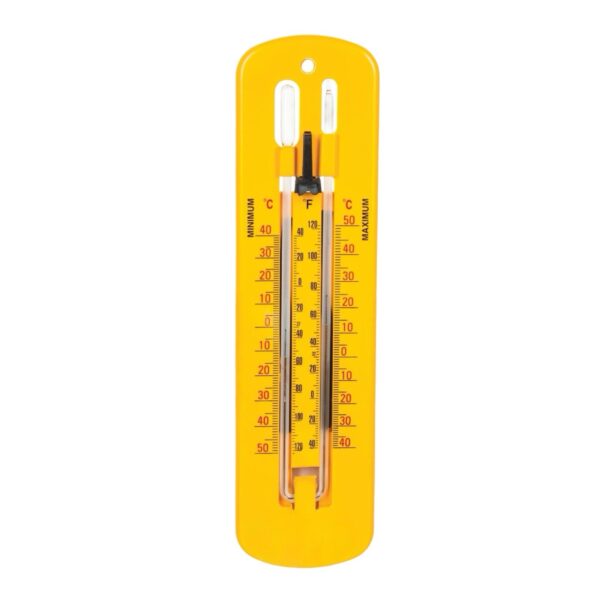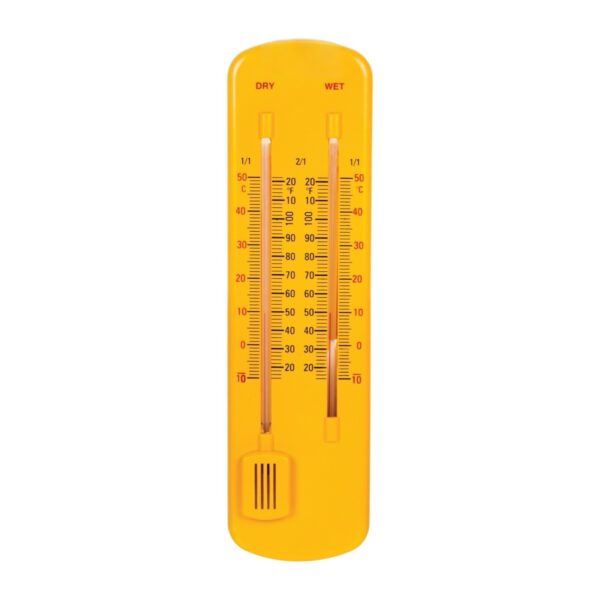- Pick up from the Samtech Store in Ambala
To pick up today
Free
- Courier delivery
Our courier will deliver to the specified address
4-5 Days
200+



$2 Original price was: $2.$1Current price is: $1. (Exc. GST)
To pick up today
Free
Our courier will deliver to the specified address
4-5 Days
200+
The wet and dry thermometer is an essential instrument used to measure humidity and temperature in the environment. It consists of two thermometers: one that has a dry bulb and another that has a wet bulb, which is moistened with distilled water. This dual-temperature measurement system allows for a comprehensive understanding of the atmospheric conditions that affect both human comfort and various processes in different industries. By utilizing these two readings, we can derive critical information about the relative humidity of the air and gauge how it affects our perception of temperature.
The dry bulb thermometer measures the air temperature directly and indicates the ambient temperature. In contrast, the wet bulb thermometer provides insight into the cooling effect of evaporation. When the moist bulb is exposed to airflow, the water evaporates, which cools the thermometer. The rate of evaporation—and consequently the temperature recorded by the wet bulb—depends on the humidity of the surrounding air. In conditions of high humidity, the evaporation rate is low, leading to a smaller difference between the dry and wet thermometer readings. Conversely, in drier conditions, the evaporation is more pronounced, resulting in a more significant temperature difference.
Understanding the readings from a wet and dry thermometer is crucial for various applications. In meteorology, these instruments aid in predicting weather patterns and assessing comfort levels for outdoor activities. In agriculture, farmers utilize this data to manage irrigation and protect crops from temperature extremes. Additionally, HVAC professionals rely on wet and dry thermometers to design efficient heating, ventilation, and air conditioning systems that optimize indoor air quality and energy use.
In conclusion, the wet and dry thermometer serves as a vital tool across multiple sectors. Its dual functionality allows for a nuanced understanding of both temperature and humidity, making it indispensable for anyone needing to monitor and control environmental conditions. Whether in scientific research, agricultural practices, or everyday applications, this device plays a critical role in enhancing our understanding of the atmosphere and improving our comfort and safety.
FAQ on Wet and Dry Thermometers
1. How does a wet and dry thermometer work?
A wet and dry thermometer works by measuring two different temperatures simultaneously. The dry bulb thermometer shows the ambient air temperature, while the wet bulb thermometer has a wick that is moistened with distilled water. When air passes over the wet bulb, evaporation occurs, which cools the thermometer. The amount of cooling is influenced by the humidity of the air: in dry conditions, evaporation is more effective, resulting in a larger difference between the two thermometer readings, whereas in humid conditions, evaporation is reduced, resulting in a smaller temperature difference. By analyzing these readings, users can determine the relative humidity of the air.
2. What tools or formulas can I use with the wet and dry thermometer readings?
To determine the relative humidity using the readings from a wet and dry thermometer, you can use a psychrometric chart or a simple formula. By taking the difference between the temperatures of the dry bulb and wet bulb thermometers, you can refer to the psychrometric chart for corresponding relative humidity values. Alternatively, several formulas can be employed to calculate relative humidity, such as the approximation formulary or online calculators designed for this purpose.
3. Where are wet and dry thermometers commonly used?
Wet and dry thermometers are widely used in various fields, including meteorology, agriculture, HVAC (heating, ventilation, and air conditioning), and industrial applications. In meteorology, they help meteorologists monitor weather patterns and make forecasts. In agriculture, farmers utilize them to manage irrigation and protect crops against extreme weather. HVAC professionals rely on the readings to design and optimize systems that maintain indoor comfort. Additionally, they can be found in laboratories and research settings where precise humidity control is required.
In stock
In stock
No account yet?
Create an Account
SAMTECH INSTRUMENTS
Typically replies within minutes
Any questions related to Wet and Dry Thermometer?
🟢 Online | Privacy policy
WhatsApp us

